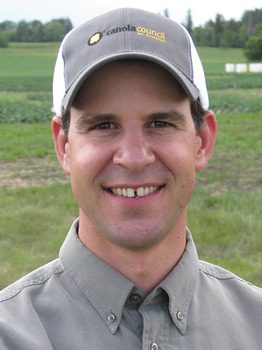Fertility Planning
1. Review 2017 yield targets
If you achieved your yield targets, that’s great! What if you didn’t? Or what if you had higher yields than planned? Some areas of the Prairies experienced drought in 2017, and as a result the fertilizer applied this spring was not utilized. Farmers will want to account for this additional fertility in the bank (the soil bank) when fertilizing for next year’s crop. On the flip side, saturated fields may have experienced denitrification losses or even leaching of nutrients below the rooting zone. Other producers may have exceeded their yield expectations, but in doing so have drawn down soil fertility reserves and subsoil moisture levels to grow this crop, depleting these resources for future crops.
Do not let one year, which may have been an extreme anomaly, affect your long-term goals. If you missed your yield target, fertility rates may not have been the reason. Fertility is important, but it is only one piece of the agronomic puzzle.
2. Soil sample this fall
Soil testing is the only way to properly determine residual levels of nutrients. This is the best basis to decide the fertilizer rates needed to achieve next year’s yield target. Keep in mind that each field may have utilized applied nutrients differently in a variable year such as 2017.
Sampling every field can be difficult to justify, but this may be a year where it makes sense to increase the proportion of fields sampled. It may also give you an indication where your fertilizer went in 2017 – if it didn’t contribute to yield. Mobile nutrients may have leached, nitrogen may have volatilized, and other nutrient levels may be higher than you expect. To get the best picture possible, sample fields intensely and preferably to depths of 24” (including separate samples for 0-6”, 6-12”, and 12-24”). The best time to fall soil sample is when biological activity slows down – or as close to freeze-up as possible. This will best represent the situation in the spring. November may still offer opportunities to take samples.
3. Balance your fertility plan
We often focus on nitrogen as the main driver of yield in our canola crops, but all the nitrogen in the world will not achieve your yield target if other nutrients are lacking. Canola will respond to fertilizer applications as long as the soil is unable to supply the adequate amount of required nutrients.
Keep in mind nutrients such as nitrogen, phosphorus, potassium and sulphur are required in much higher amounts than other nutrients. This is why we want to ensure that these nutrients are not limiting before looking at adding micronutrients, which are only required in very small (micro) amounts. Plan to fertilize based on your soil test results with the expectation of an adequate return on investment for your fertilizer expenditures.
4. Evaluate your purchasing strategy and application timing
With fall soil test results in hand, you can tailor fertilizer purchasing decisions, make fall applications or take time through the winter to plan for improved logistics and profitability for next year.
Logistics of fertilizer applications often overrule proper agronomic practices. In these situations, you may be sacrificing more than you are gaining without realizing it. Always consider the 4R approach: the right nutrient source, at the right rate, in the right place, at the right time. If you have to make trade-offs, strive to balance efficiencies with best management practices. For instance, if your best application time doesn’t match that of the crop, consider what product would be best suited to minimize the effects. For more background information, reference the Fertility Management section at canolaencyclopedia.ca.
5. Make changes to improve your fertility plan
Changes could be equipment upgrades, maintenance to optimize equipment performance, evaluation of new products or maybe an aggressive yield target. Start small and evaluate the changes you want to implement before adopting the change on the entire farm. Conduct on-farm trials if you wish to implement a new product or higher fertility rate, and consult with your local Canola Council of Canada agronomist for tips and trial protocols. To find your agronomist, go to canolawatch.org/contact-us/.
Remember, the option that fits your plan the best is not necessarily the option that fits best for your retailer or neighbour. Planning now with your agronomic advisors and input suppliers will ensure you have the resources available when you need them.





